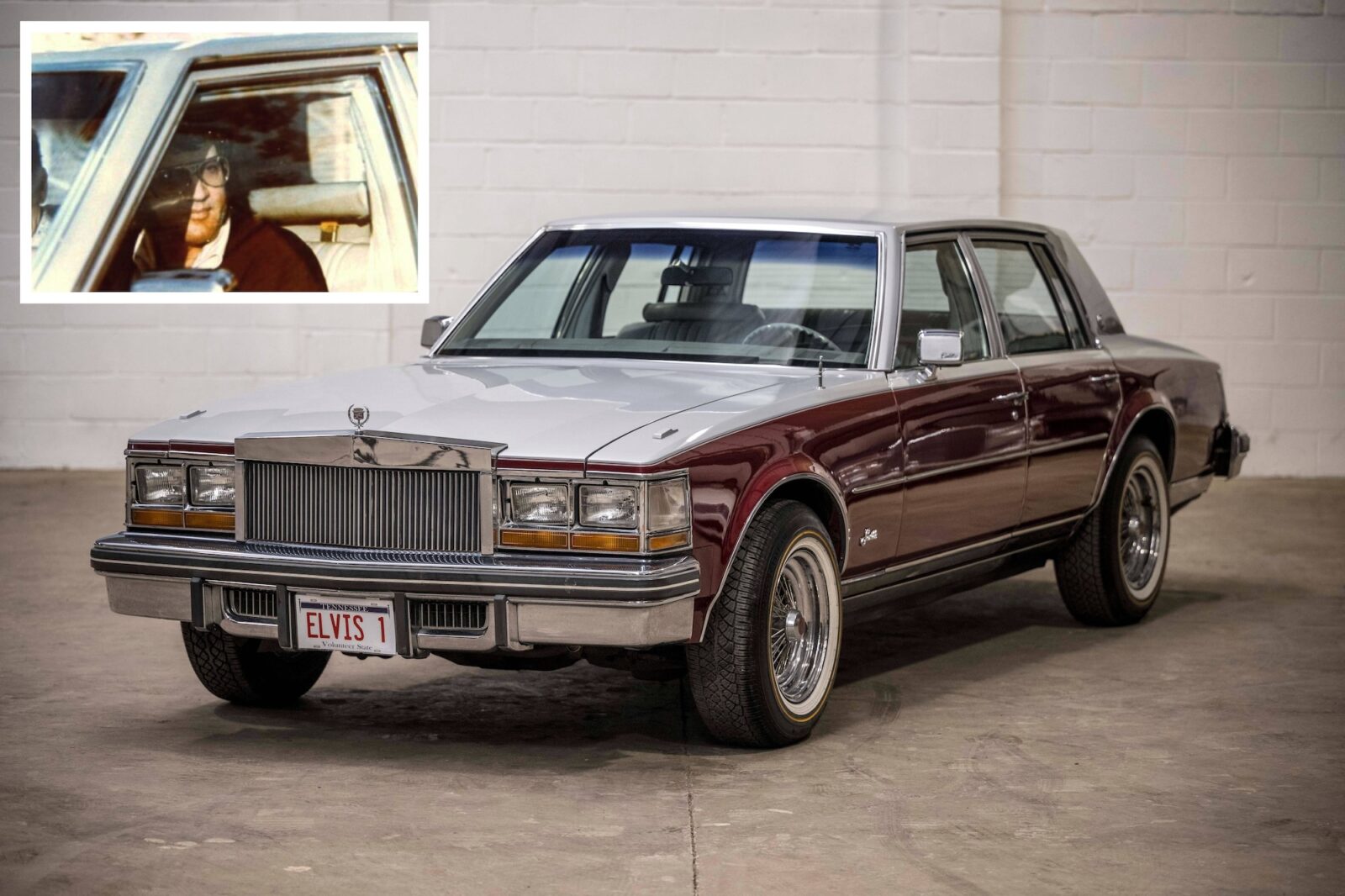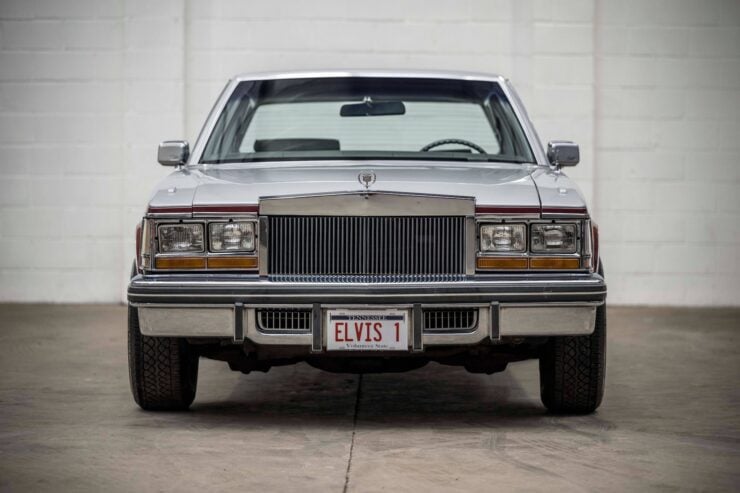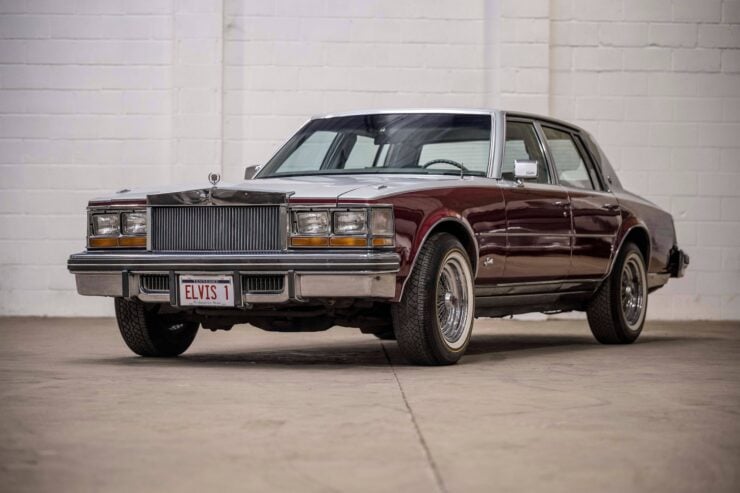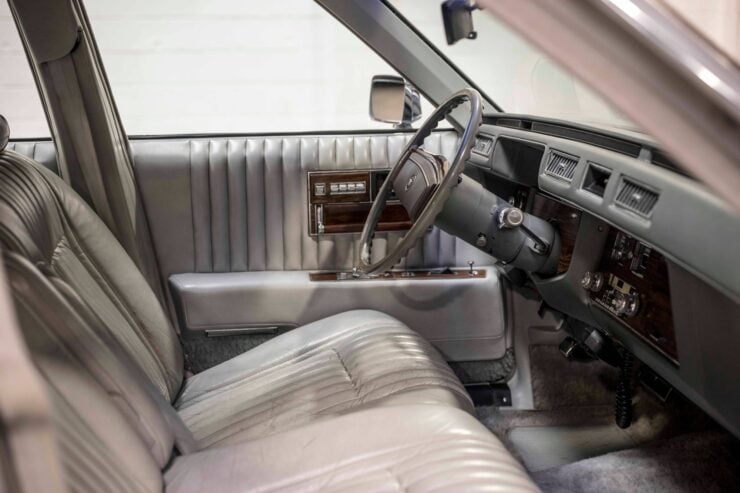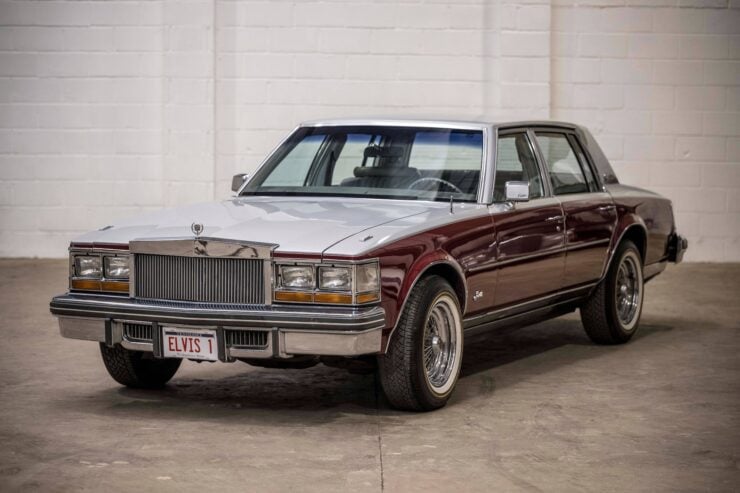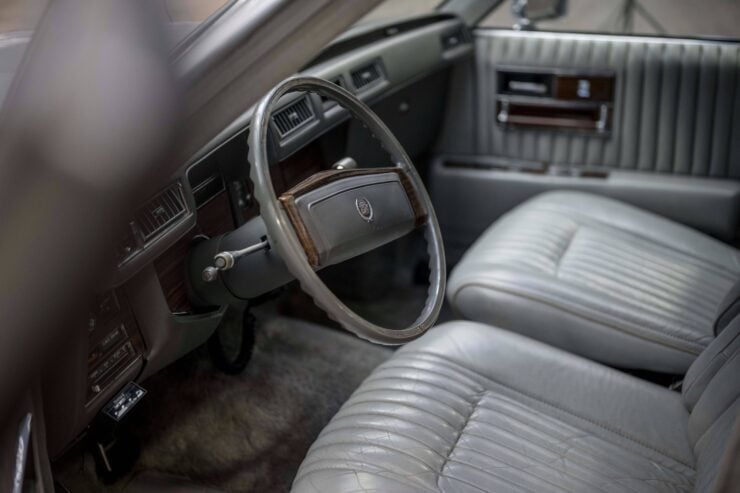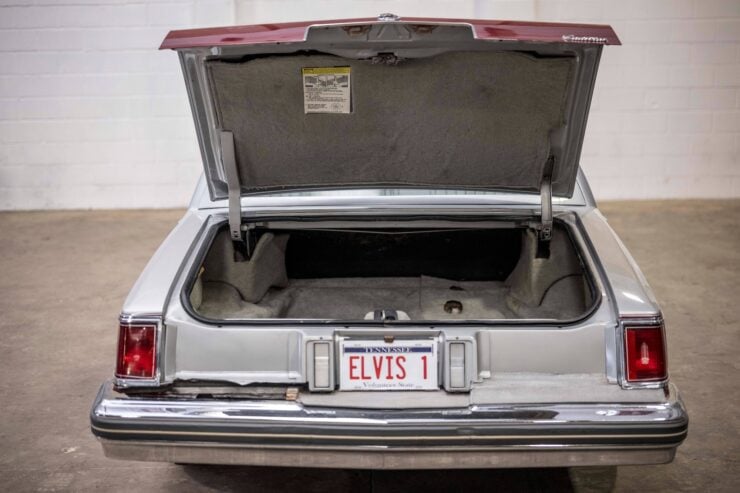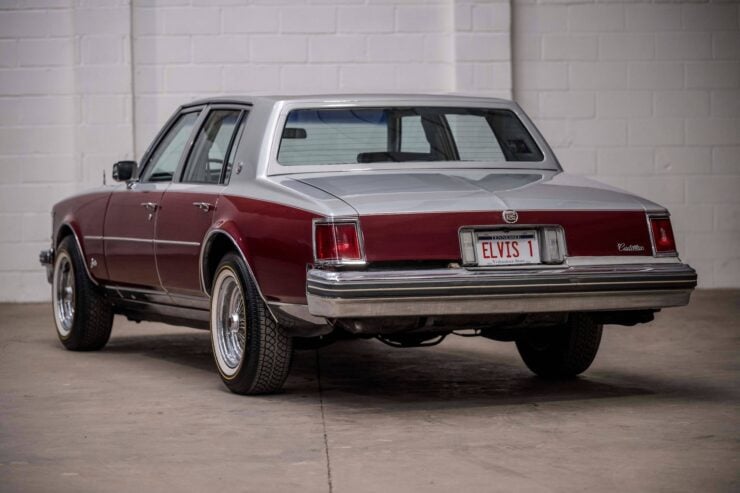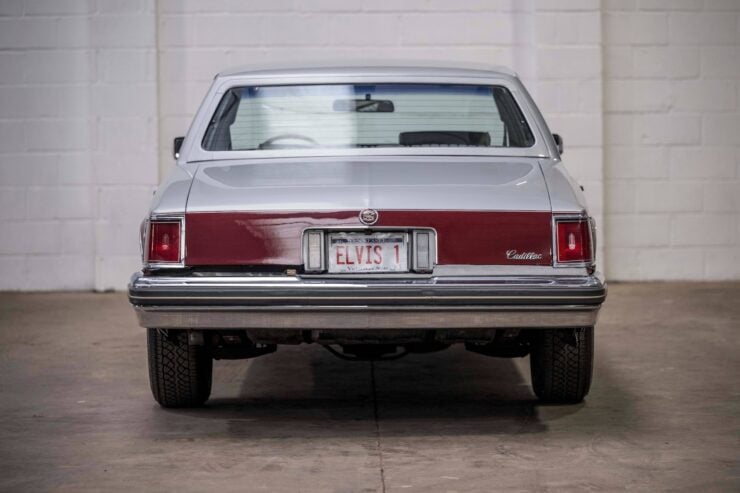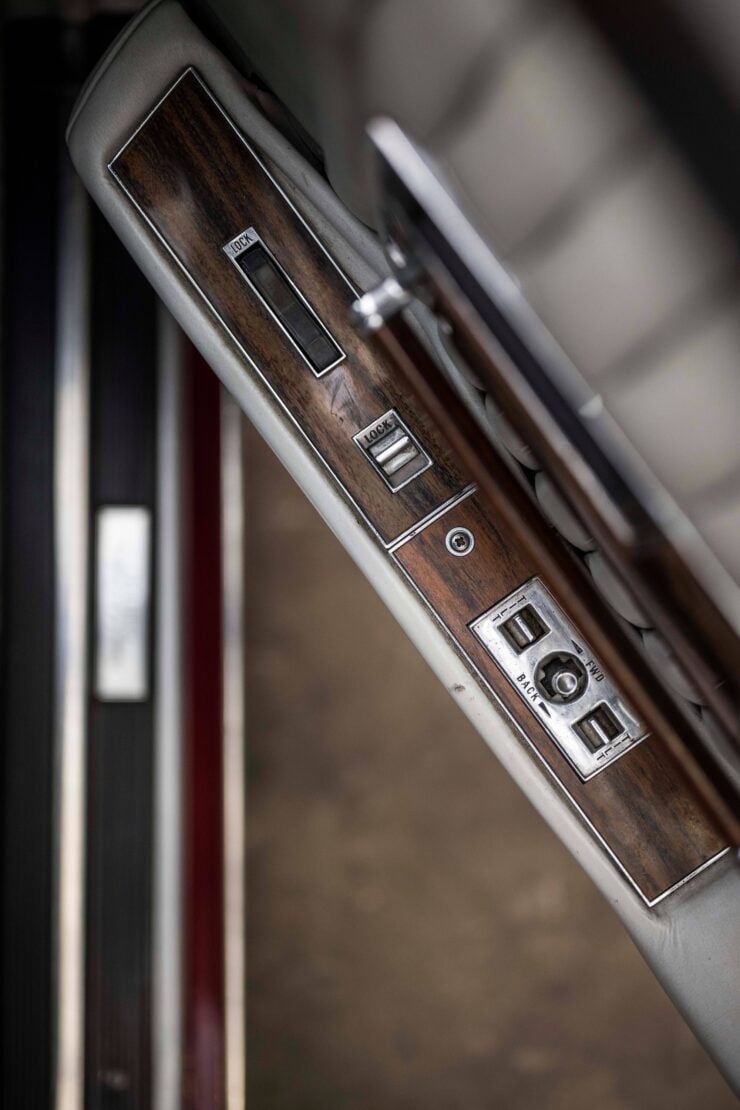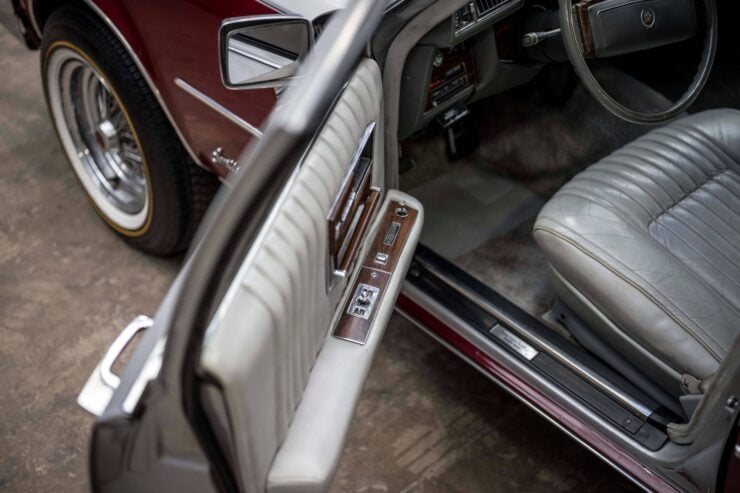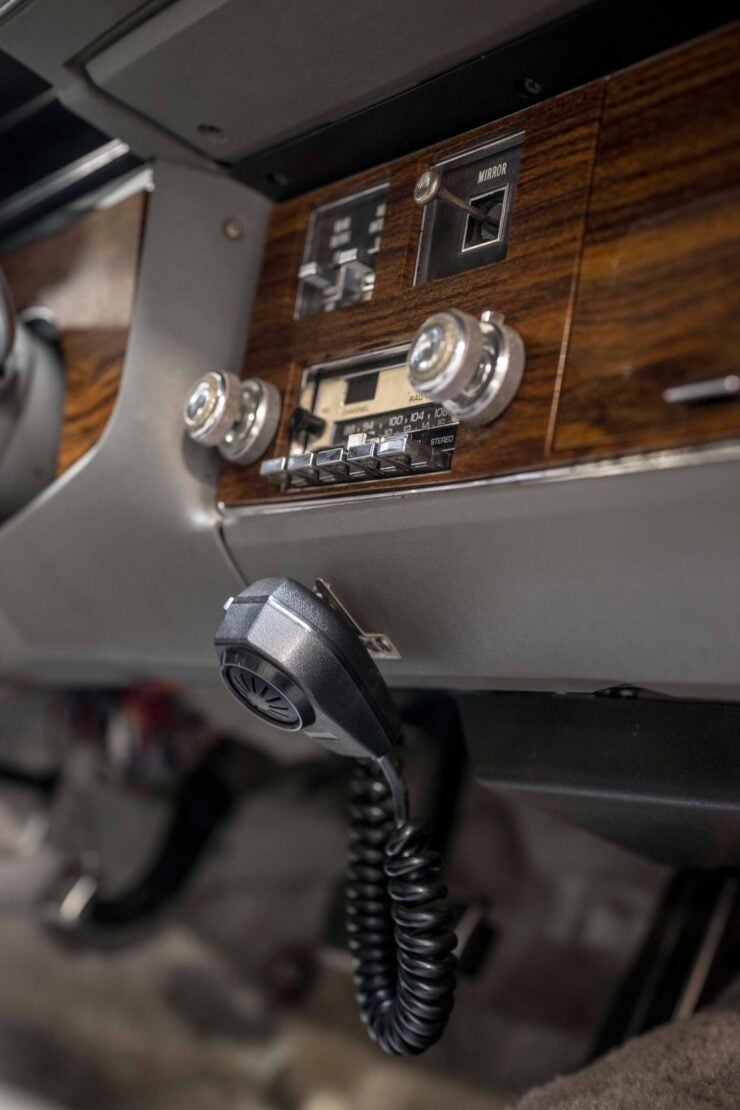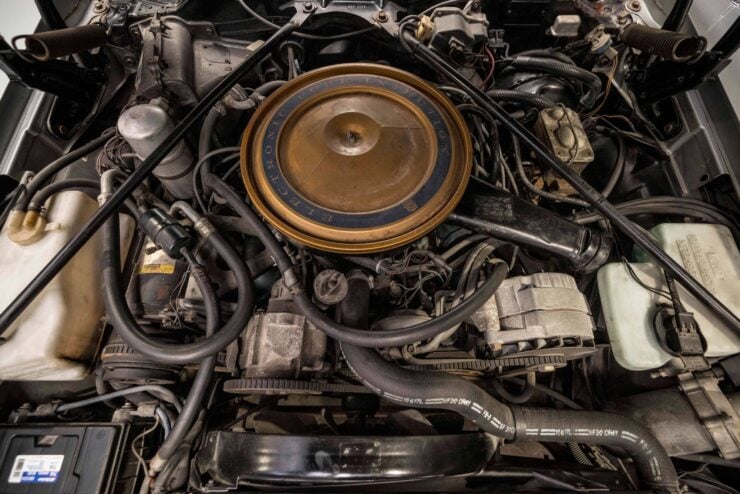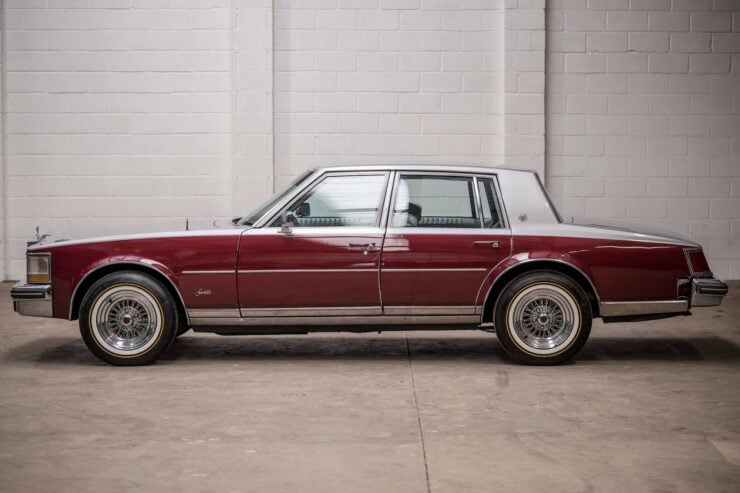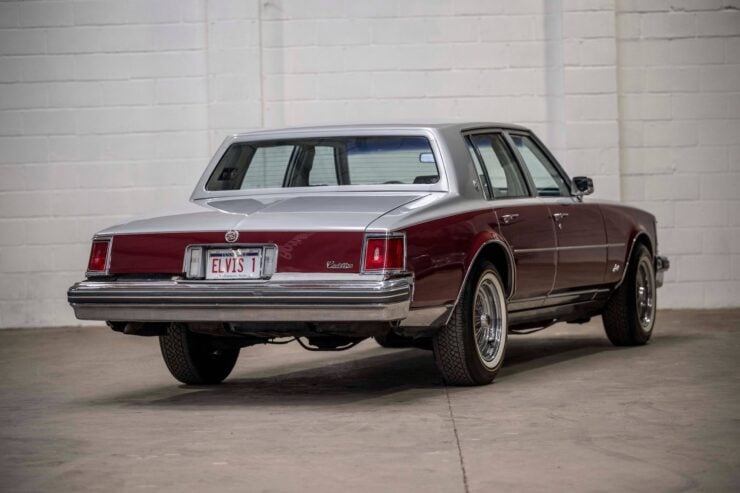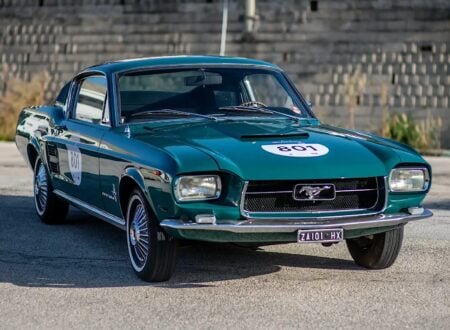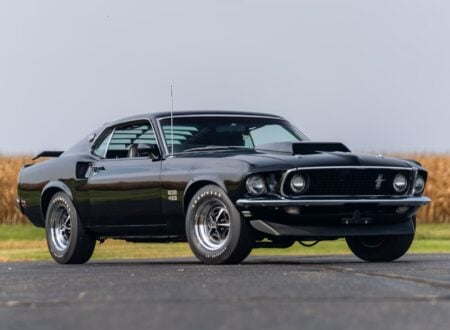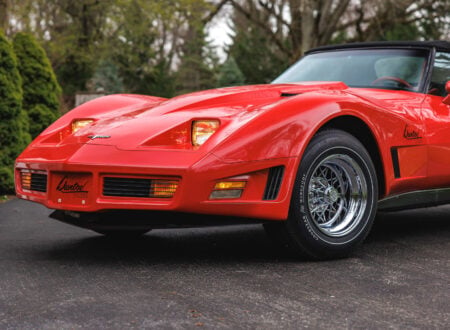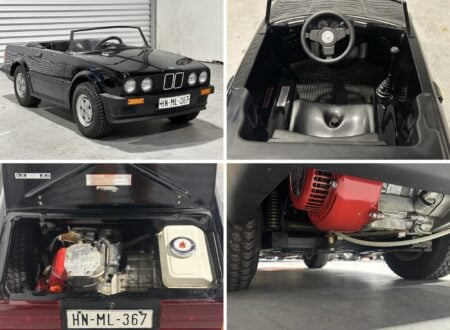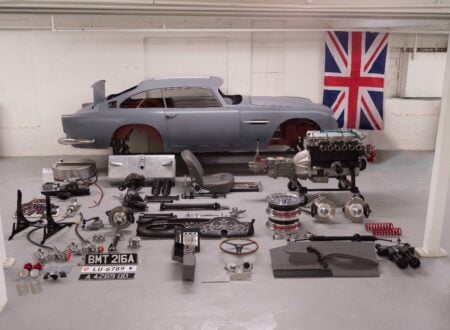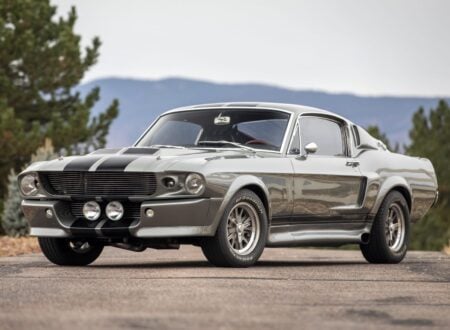This 1977 Cadillac Seville was the last car ever driven by Elvis Presley, he was photographed driving it out of Graceland just one day before his untimely passing on August 16th, 1977.
To this day the car is still fitted with the CB radio he had installed, he apparently used to call ahead to Graceland when on his way home to have the guards in the gatehouse ready to open up, and he could also ensure his dinner would be ready.
Fast Facts – The Elvis Presley’s Cadillac Seville
- This 1977 Cadillac Seville was the last car driven by Elvis Presley, photographed with him at the wheel just a day before his passing. The car still has the CB radio Elvis installed to communicate with Graceland staff when returning home.
- The Cadillac Seville, introduced in the 1970s, was a response to European luxury cars. This model featured a smaller, lighter design with a 350 cubic inch V8 engine and was Cadillac’s first unibody car, providing improved fuel efficiency and maneuverability.
- After Elvis’s death, his father gifted the car to Elvis’s fiancée, Ginger Alden. The vehicle later passed through the hands of collectors and was displayed at the National Motor Museum before being offered for sale, complete with documentation from Graceland Authenticated LLC.
- The Seville includes Elvis’s name on the title document, and while it retains its historical value, the car will need refurbishing and a full servicing before it is road-ready. It is currently listed for sale with full details and history available through the auction.
A History Speedrun: Elvis Presley
Elvis Presley was born in Tupelo, Mississippi in 1935. He became an iconic American singer, actor, and cultural figure hailed as the “King of Rock and Roll.” His unique blend of styles from country, blues, and gospel music, along with his famously charismatic stage presence and dance moves, revolutionized popular music in the 1950s and 1960s.
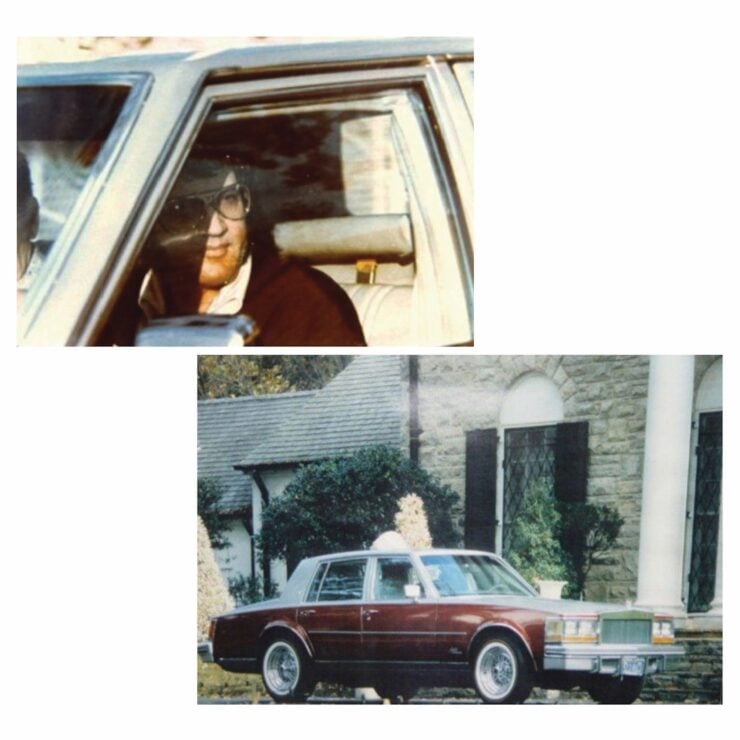 Here we see Elvis driving this very Cadillac as he returned to Graceland on the 15th of August 1977, a day before his death. The lower image shows the car parked outside Graceland on an earlier occasion. Images courtesy of the Elvis Presley Family Archives.
Here we see Elvis driving this very Cadillac as he returned to Graceland on the 15th of August 1977, a day before his death. The lower image shows the car parked outside Graceland on an earlier occasion. Images courtesy of the Elvis Presley Family Archives.In 1956, his breakout single “Heartbreak Hotel” made him a household name, followed by hits like “Hound Dog,” “Jailhouse Rock,” and “Can’t Help Falling in Love.”
Elvis’s dancing, especially his hip-swinging and thrusting, shocked conservative audiences but captivated millions, cementing his status as the key teenage idol of his time. Beyond music, he went on to star in 31 films, including “Love Me Tender” and “Viva Las Vegas.” Though his popularity waned in the late 1960s, his 1968 “Comeback Special” on television revitalized his career, leading to a wildly popular residency in Las Vegas in the 1970s.
Despite his success, Elvis struggled with personal challenges, including poor health linked to prescription drug abuse. He passed away on August 16th, 1977, at his Graceland mansion in Memphis, Tennessee, leaving behind a decades-long legacy – his music continues to inspire new generations, and Graceland remains a pilgrimage site for fans worldwide.
The First-Generation Cadillac Seville
The creation of the Cadillac Seville can be traced back directly to the surging popularity of German luxury cars of the 1970s, largely those from BMW and Mercedes-Benz. Cadillac had once been the gold standard of American automobiles, but by the Malaise Era of the 1970s they had become cumbersome land yachts, and they seemed bloated when compared with their sleek Teutonic rivals.
From the outset, Cadillac engineers designed the Seville to be smaller, lighter, and faster than its larger Cadillac siblings, all while ensuring it had good performance, well good performance by Cadillac standards at least.
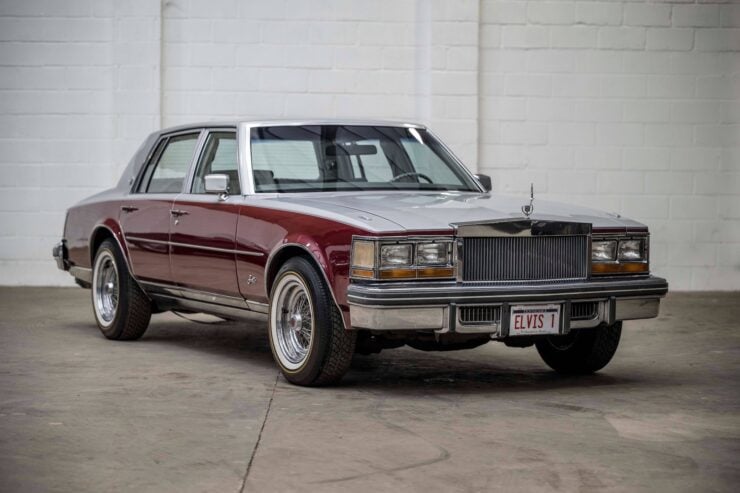 The Cadillac Seville was a lighter, faster, and much more modern-driving car developed to help the firm better compete with the likes of BMW and Mercedes.
The Cadillac Seville was a lighter, faster, and much more modern-driving car developed to help the firm better compete with the likes of BMW and Mercedes.The car was based around a unibody frame with a bolt-on subframe. The rear suspension was sourced from the X-body platform and shared many parts with the Chevrolet Nova, though Cadillac was careful to keep this information quiet.
Power would be provided by the 350 cubic inch (5.7 liter) Oldsmobile V8 fitted with a Bendix/Bosch electronically-controlled fuel-injection system. It had approximately 180 bhp and could get as much as 21 mpg on the highway, unheard of for a Cadillac.
Power disc brakes and rear drums were fitted, with rear discs being introduced later. The only transmission option was an automatic, given the luxury intentions of the car this was no surprise. The Cadillac Seville would weigh it at almost 1,000 lbs (450 kgs) lighter than the full-sized Cadillac Deville and it featured more compact dimensions that made it far easier to drive and park.
The first-generation Seville would be sold from 1975 to 1979, though production continued in Iran under license until 1987. The car would be a strong seller for Cadillac, with over 215,000 units sold.
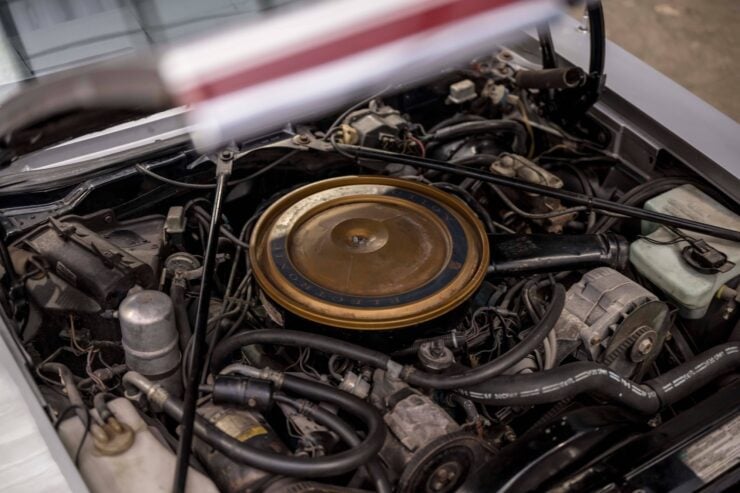 The car is powered by the original 350 cubic inch (5.7 liter) Oldsmobile V8 fitted with a Bendix/Bosch electronically-controlled fuel-injection system producing 180 bhp.
The car is powered by the original 350 cubic inch (5.7 liter) Oldsmobile V8 fitted with a Bendix/Bosch electronically-controlled fuel-injection system producing 180 bhp.The first-gen Seville would be succeeded by the closely-related second-ten model, and the model family would remain in production from 1975 until 2004.
The Elvis Presley 1977 Cadillac Seville Shown Here
This is the last car that Elvis Presley would ever drive, he was photographed behind the wheel just a handful of hours before he was found dead. It would be one of an estimated 200+ cars that he would buy in his lifetime, many of them Cadillacs, and usually as gifts for people he cared about.
Nine days after Elvis’ death this car was given to Ginger Alden by Elvis’ father, Vernon Presley. Alden was Elvis’ fiancé and the two had been planning to marry just four months later on Christmas Day the same year.
A few years after this, Alden sold the car to Jimmy Velvet who owned the world’s largest collection of Elvis memorabilia, he was the owner and founder of the Elvis Presley Museum. Years after this the car would be sold again, at a Las Vegas Hilton auction, then another decade later it would be sold to the current owner who loaned it to Lord Montagu’s National Motor Museum at Beaulieu for public display.
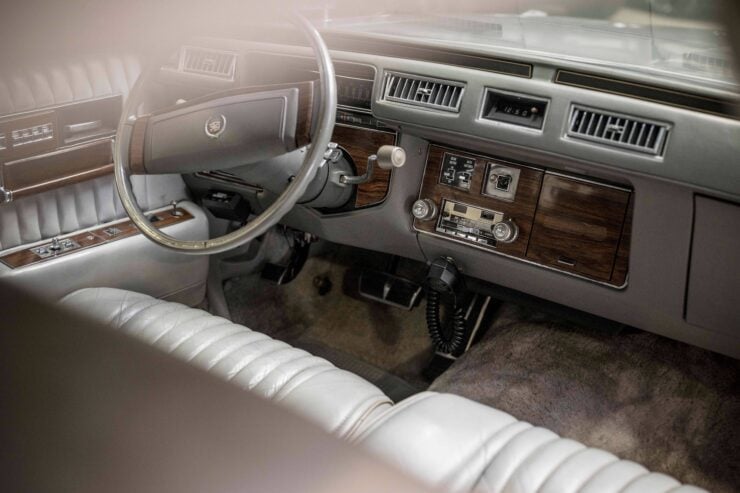 Here you can see the CB radio that Elvis had installed. He used it to call ahead to the Graceland gatehouse to have the gate opened when he was returning home. He also apparently used it to call ahead to the kitchen to order food before arriving back at the mansion.
Here you can see the CB radio that Elvis had installed. He used it to call ahead to the Graceland gatehouse to have the gate opened when he was returning home. He also apparently used it to call ahead to the kitchen to order food before arriving back at the mansion.The car is now being offered for sale with Elvis’ full name on the car’s title document. The car’s history has also been documented and certificated by Graceland Authenticated LLC, the ultimate arbiters on all things Elvis-related.
If you’d like to read more about this unusual Cadillac Seville you can visit the listing here. It should be noted that it does need some refurbishing, and a full servicing would be needed before any driving is attempted.
Images courtesy of The Market by Bonhams

